Feature 1
Add more detail about this feature, such as benefits, appearance, components and value

+1 888 123 4567


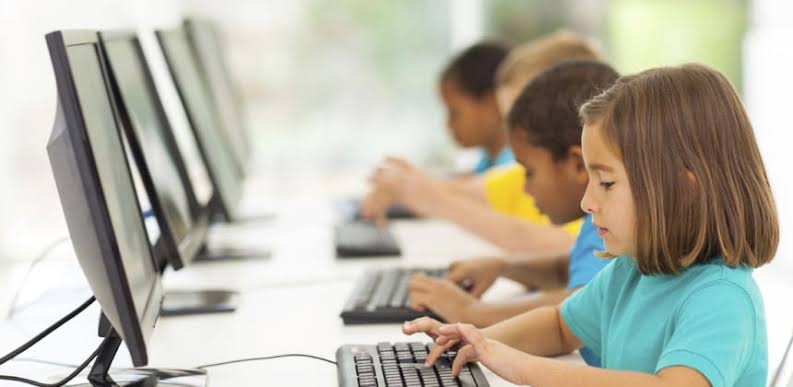
دور تكنولوجيا التعليم في تطوير المنظومة التعليمية هو دور أساسي في تطوير الوسائل التعليمية لرفع وعي الطلاب، و إثقالهم بمهارات تتناسب مع تطور العصر الذي نحيا فيه. وتم استخدام التكنولوجيا لخلق بيئة تعليمية مطورة، تجعل الطالب أكثر تفاعل في العملية التعليمية. كما يساعد استخدام التكنولوجيا في التعليم على تحسين وتعزيز قدرات الطلاب الذهنية. وذلك لأنها تهتم ببناء إنسان يستطيع مواجهة تطورات الحياة.
ترجع أهمية استخدام التكنولوجيا في التعليم إلى:
تنشيط التفاعل بين الطلاب والمعلمين في العملية التعليمية وإتاحة الوسائل التعليمية المختلفة في عملية التعلم.
استخدام وسائل تعليمية مختلفة تحقق أهداف التعليم الحديث.
جعل اثر التعلم أطول من خلال تنمية مهارات البحث.
يسهل قياس وتقييم العملية التعليمية بطريقة مستمرة.
يسهل على المعلم معرفة الفروق الفردية ومراعاتها بين الطلاب .
توفير كثير من الوقت والجهد وخلق أنشطة جديدة ومثمرة في عملية التعلم.
توفير وسائل جديدة للحصول على المعلومات ما يعمل على توسيع مدارك الطلاب وتعليمهم مهارات جديدة منها مهارة حل المشكلات.
رفع مستوى المنتج التعليمي، أي الطلاب الذين يتعلموا مهارات جديدة تجعلهم منتج أفضل يفيد المجتمع.
يطرح كل من الآباء والمعلمين سؤال. وهو كيف يمكن استخدام التكنولوجيا في خلق بيئة تعليمية جيدة؟ وكيف يمكن أن يكن للتكنولوجيا دور فعال في تطوير التعليم؟
و الإجابة هى أن استخدام الوسائل التعليمية المتطورة أصبح أحد ضروريات عصرنا خاصة بعد التطور التكنولوجي الذي حدث في آخر عشر سنوات. حيث تم استخدام وسائل تعليمية حديثة، على سبيل المثال الشاشات الإلكترونية، والسبورة الذكية، والحاسب الآلي. وذلك طبقاً للتطبيق المعايير الجديدة في الاستراتيجية التعليمية الحديثة. ولكي يتم تفعيل التطوير يجب توفير بعض الاحتياجات اللازمة لذلك مثل:
الدعم المادي من قبل الدولة، توضع ميزانية للأنفاق على تطوير التعليم لشراء الأجهزة التي تساعد في تطبيق البرامج التكنولوجية الحديثة.
تدريب هيئة التدريس على المهارات والطرق الحديثة في التعليم قبل وضع المناهج الحديثة. لأن دور المعلم لا يقل أهمية عن الأجهزة المستخدمة، وتوفير كوادر لتدريب المعلمين وشرح المناهج الحديثة لتعزيز أداء المعلم و الطلاب.
استخدام التكنولوجيا وتطبيقها بطريقة تناسب المادة الدراسية التي يتم تدريسها. وذلك حتى يتم الربط بين المنهج والادوات المستخدمة في التعليم، على سبيل المثال الأدوات المستخدمة في شرح مادة الفيزياء يجب أن تكون مختلفة تماماً عن التي تستخدم في مادة نظرية مثل اللغة الفرنسية.
استخدام التقييم لمعرفة لأداء الطلاب باستخدام الملفات الإلكترونية. وذلك لتقليل التكلفة وتعزيز الصلاة بين المعلم والطالب.
تقديم مصادر تعليمية مطورة تحفز الابداع والتفكير الابداع للطالب. من خلال السعي وراء مصادر للتعلم جديدة ومفتوحة المصدر حتى تساعد الطلاب على الاستكشاف. وهذا سوف يقلل من تكلفة طبع الكتب التعليمية والاعتماد على وسائل جديدة.
تطبيق العمل الجماعي من خلال استخدام التسجيلات الصوتية والمرئية لمشاهدة الطلاب في الصفوف الدراسية.
يعد السبب الرئيسي لاستخدام التكنولوجيا في التعليم هو خلق بيئة تعليمية حديثة لتعزيز مهارات الطلاب الحياتية ليستطيع مواكبة التطور التكنولوجي. ولكي يتمكن من الحصول على فرص في المجتمع الجديد. وتتمثل فوائد هذه الوسائل التعليمية في:
تساعد التكنولوجيا في استخدام مهارات التواصل بين كلاً من الطالب والمعلم. وكذلك الطلاب مع بعضهم بهدف تعزيز العمل الجماعي، وتطوير مهارات التواصل كالنطق السليم خاصة في تعلم اللغات. وكذلك استخدام الطلاب مهارات جديدة تثقل شخصياتهم.
تطوير مهارات التفكير الابداعي في خلق الطلاب لوسائل جديدة في كيفية تخطي الازمات، وتعلم كيف يمكنه حل المشكلات التي قد تواجه في الحياة.
تعزيز السلوك الإيجابي بين الطلاب، والعمل على تعزيز المفاهيم الصحيحة وطرد السلبيات. كذلك تطوير النمو اللغوي واكتساب مهارات تواصل جديدة.
توفر التكنولوجيا مصدر هام من مصادر الحصول على المعلومات، في تعلم الطلاب مهارات جديدة كمهارات البحث.
تسهل التكنولوجيا استخدام وسائل التعليم الحديثة، وفتح افاق جديدة امام كلاً من المعلم والطالب.
يمكن استخدام التكنولوجيا في استخدام وسائل إيضاح حديثة في التعلم مثل:
هى إحدى وسائل التعلم الجديدة يستخدمها المعلم في توضيح المعلومات للطلاب.
إنشاء مدونات للشرح حيث يقوم كل من المعلم بتوضيح المفاهيم الصحيحة، والمناهج الحديثة التي يتم تدريسها مع السماح للطلاب بالتعليق على تلك المفاهيم.
توفير التعامل من خلال المواقع الإلكترونية المتخصصة في تسهيل التواصل بين الطالب والمعلم، وبين الطلاب بعضهم بعض. حيث يتم نشر المقالات التعليمية مع توفير إمكانية التواصل بين الطلاب والمعلمين وكذلك أولياء الأمور، حتى يكون ولي الأمر على علم بسير العملية التعليمية.
مرت تكنولوجيا التعليم بعدة مراحل لكي تستطيع مواكبة التطور منها:
مرحلة التعليم البصري: كان الاعتماد في هذه المرحلة على حاسة البصر، حيث يتم عرض الصور والمرئيات للطلاب للتوضيح المعلومات. حيث بينت الدراسات إن 80:90% من خبرات الفرد تنتقل له عن طريق البصر.
مرحلة التعليم السمعي البصري: في هذه المرحلة كان يستخدم الصور والمرئيات معا مثل الجداريات المرئية، والاناشيد كانت تستخدم كطريقة لتوضيح المعلومات.
مرحلة الاتصال: في هذه المرحلة تم استخدام وسائل تعليمية تراعي الاتصال بين المعلم والطالب.
يتم في هذا النظام يتم تحديد الهدف أولا من التعلم. حيث يتم دمج التعليم التقليدي مع التعليم الفردي والجماعي.
مرحلة العلوم السلوكية:
يتم في هذه المرحلة تحويل المواد التي تعرض إلى وسائل تعليمية جديدة مبرمجة.
مرحلة تكنولوجيا التعليم:
يتم التركيز في هذه المرحلة على تطوير مهارات الطلاب، والتركيز على مهارة حل المشكلات. ويتم أيضا تحديد الأهداف، ويتم ربط المواد الدراسية بالبرامج التعليمية.
هناك عناصر أساسية لتكنولوجيا التعليم وهى:
النظرية والممارسة: وهى النظريات الأساسية المستخدمة في بناء الاستراتيجية التعليمية الحديثة.
التصميم و التطوير واستخدام الإدارة والتقويم: يجب تصميم مواد تعليمية مطورة تعمل على إبهار المعلم واثارة شغفه. وكذلك يتم ابتكار طرق بما يتناسب مع المواد التعليمية التي تم تدريسها.
هي مجموعة الإجراءات التي تم تحديدها لتحقيق الهدف من العملية التعليمية، من أجل اكساب المعلم مهارة جديدة.
التعليم: هو الاسلوب النظم الذي يسهل على المتعلم إنجاز تغير في ادائه. وتتعدد مصادر التعلم في التعليم الحديث، كذلك يتم توزيع مهام التعليم بين افراد هم المسؤولين العملية التعليمية.
المحتوى التعليمي:
وهو يشمل الافكار والنظريات التي يتم استخدامها لنقل معلومة للمتعلم.
الأجهزة والتجهيزات:
هى الأدوات التي تستخدم لتوضيح المعلومات للطلاب.
الاماكن: وهى البيئة التي يتفاعل فيها المتعلم والمعلم.
الأساليب: وهي الطرق التي يستخدمها المعلم في نقل معلومات للطلاب.
.
إن توظيف التكنولوجيا في التعليم له دور مهم في تحسين العملية التعليمية. حيث أن استخدام التقنيات التكنولوجيا الحديثة في التعليم مثل أجهزة الكمبيوتر وشبكة الإنترنت واللوحات التفاعلية والأجهزة اللوحية
هي طريقة تعليمية حديثة تستخدم لتسهيل وصول المعلومات إلى الطلاب وتعزيز مهاراتهم وقدراتهم وزيادة التفاعل بين أطراف العملية التعليمية. بالإضافة إلى توفير بيئة تعليمية فعالة ومتطورة. وفي هذا المقال سنتعرف على كيفية توظيف التكنولوجيا في التعليم، وأهميتها في تطوير المنظومة التعليمية
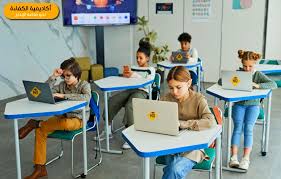
.
تتعدد أهمية توظيف التكنولوجيا في التعليم، على سبيل المثال :
الارتقاء بالعملية التعليمية وجعل عملية التعلم أكثر كفاءة. من خلال استخدام التقنيات التعليمية الحديثة. بالإضافة إلى أن توظيف التكنولوجيا في التعليم تساعد الطلاب ذوي الاحتياجات الخاصة في عملية التعلم من خلال هذه التقنيات وشبكة الإنترنت، التي توفر العديد من الموارد التعليمية المتنوعة
.
تساعد التكنولوجيا الطلاب والمعلمين على اكتساب مهارات جديدة من خلال التعامل مع الوسائل التعليمية الحديثة. على سبيل المثال معرفة كيفية التواصل عبرالبريد الإلكتروني، وكيفية إعداد العروض التقديمية الناجحة. بالإضافة إلى تطوير المهارات الأساسية مثل الكتابة، من خلال تعلم الكتابة باستخدام لوحة المفاتيح
.
يستطيع المعلمون من خلال توظيف التكنولوجيا في التعليم، مراقبة أداء الطلاب وقياس تقدمهم العلمي. وذلك من خلال الاختبارات الإلكترونية السريعة وإعداد قوائم المعدلات للطلاب. بالإضافة إلى إنشاء مجموعات إلكترونية للمناقشة مع الطلاب والإجابة على أسئلتهم ومعرفة الفروق الفردية بينهم
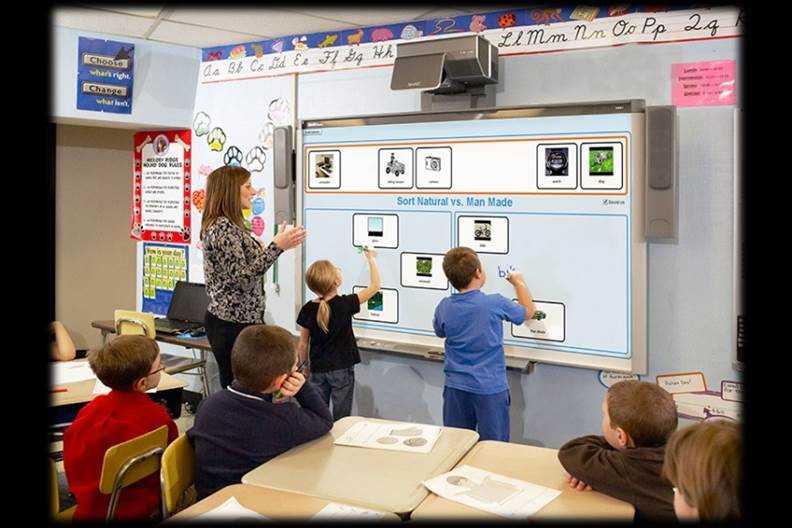
.
تتمثل أهمية توظيف التكنولوجيا في التعليم في تبسيط عملية التعلم. من خلال استخدام التقنيات الحديثة مثل العروض التقديمية و مقاطع الفيديو ووسائل التواصل وغيرها من الوسائل، التي تسهل شرح المعلومات للطلاب وترسيخها في أذهانهم. كما تسهل التواصل بين المعلمين والطلاب مما يزيد التفاعل و الإنتاجية في التعليم
.
مع تطور التكنولوجيا وتوظيفها في التعليم، اختفت العديد من المشكلات التي تعيق عملية التعلم للطلاب ذوي الاحتياجات الخاصة. حيث تتوفر العديد من الأجهزة والتطبيقات والوسائل التعليمية المختلفة التي تمنح هذه الفئة من الطلاب الفرصة في التعلم والتواصل الفعال مع المعلمين، بالإضافة إلى حل مشكلاتهم.
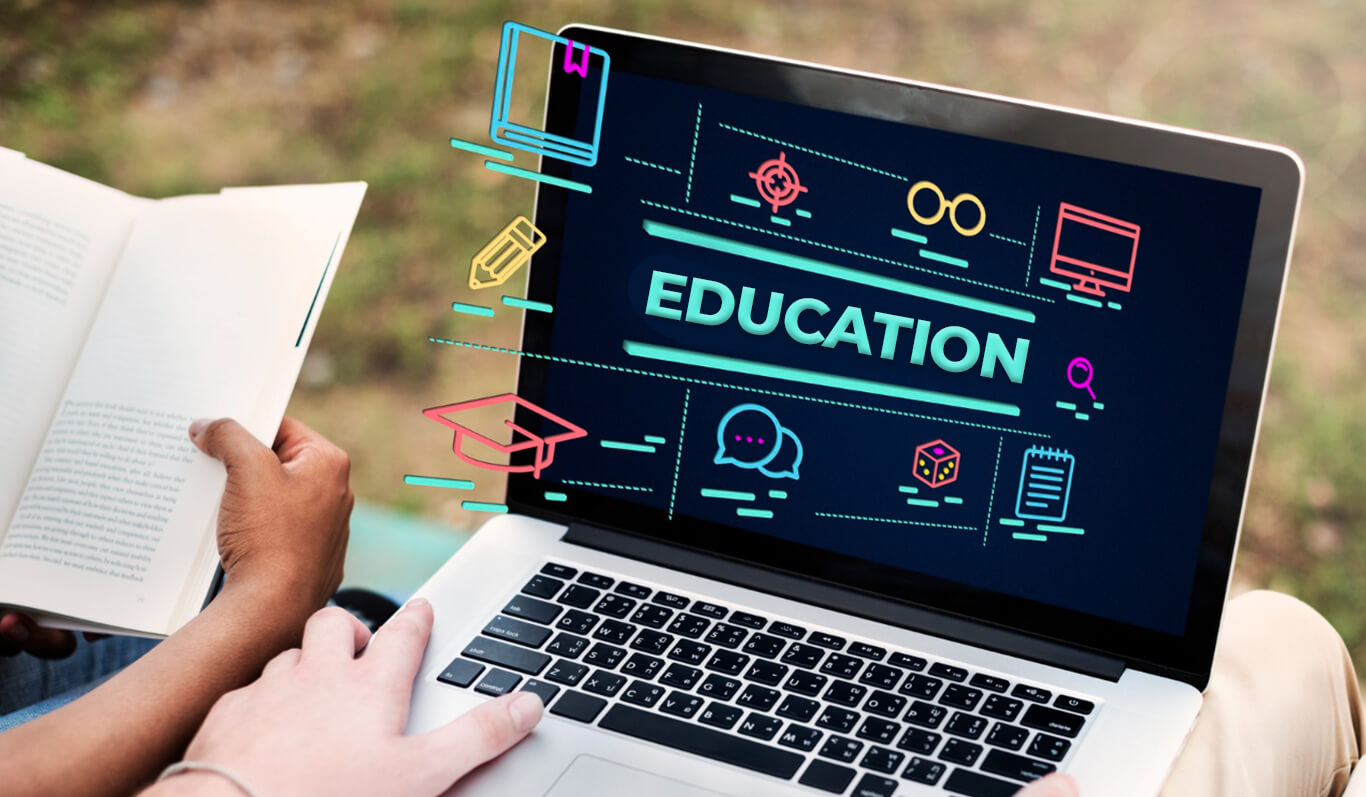
Technology is transforming every field of life today including education. Thanks to digitalization, the concept of eLearning came up! It resulted in the use of desktops, laptops, smartphones, and software applications for teaching and learning outside the classrooms.
No doubt, the education sector is highly benefitted from the rapid evolution in the technology world. It eased the life of both students and teachers. More specifically, the use of technology brought progressive changes in teaching methods. This consecutively helped students to learn efficiently and improve their academic performance and get good grades in school.
While you may still wonder why the use of technology in education is intensifying day by day, this blog clears your every doubt. Here, we explained the immeasurable impact of technology on education by pointing out its key benefits for students. Read this blog further to know.
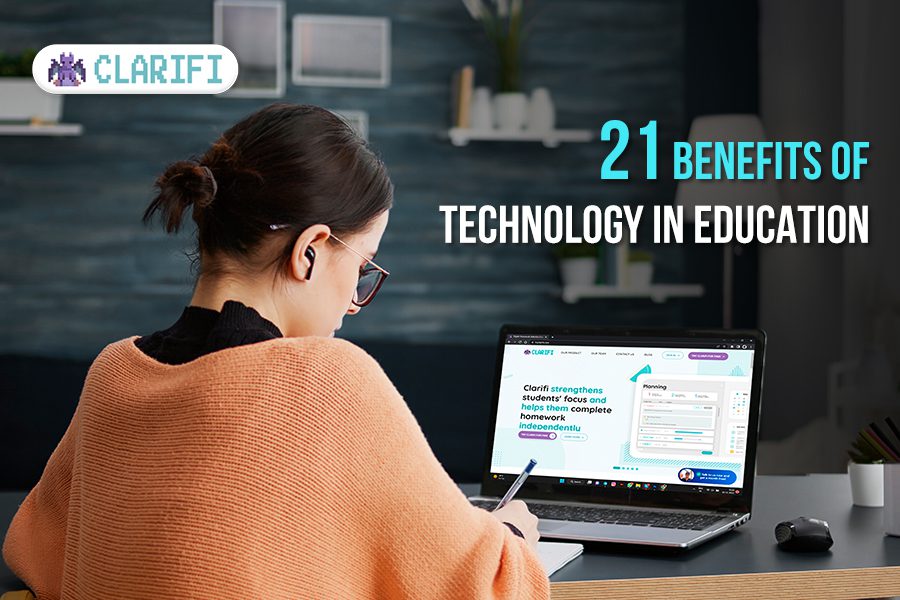
Putting it simply, educational technology or EdTech is the use of software solutions, digital tools, and media that help in transferring knowledge and exchanging learning materials.
Some of the noteworthy changes that students and teachers are experiencing today due to educational technology are:
Augmented reality is enabling students to see science concepts as visual graphics on screen in the class or real-time environment. Virtual reality, on the other hand, lets students take an educational tour of places/destinations without leaving the classroom. Both technologies together are truly transforming the mode of teaching and creating immersive learning experiences for students. In short, it makes the lessons interesting and fun-filled for them.
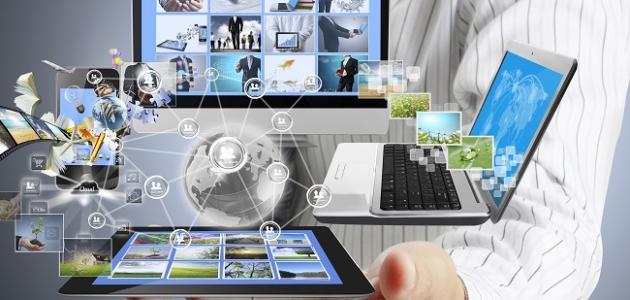
Educational technology bought a set of devices for classrooms, saying bye to the norm of BYOD (Bring Your Own Devices for students. They also no longer have to visit computer centers or technology labs. Students in most schools are provided with laptops, tablets, or iPads. In the pervasive online environment, it also became necessary for them to be aware of cyber security.
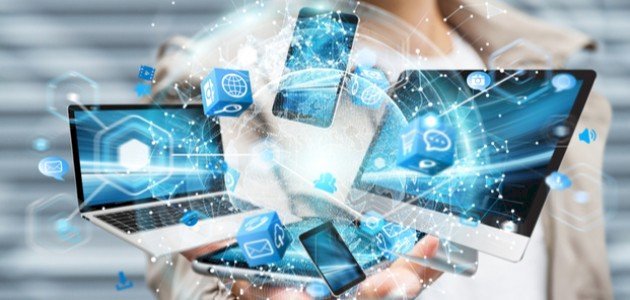
One of the impactful changes brought by EdTech is personalized learning. In every aspect, whether it is a classroom, home study, or virtual session, students can get tailor-made learning experiences. It helps students choose learning patterns that suit their needs or capabilities. It also resulted in blended learning, which gave more responsibility to the student. They must interact with teachers directly and engage in discovery-based learning.

Lastly, the use of AI is one of the greatest technology benefits for students. It enabled 24×7 learning opportunities for students, task automation, access to global learning sources, and helped in closing skill gaps. In other words, AI widened the scope of personalized learning and is also assisting students to get answers/solutions quickly.
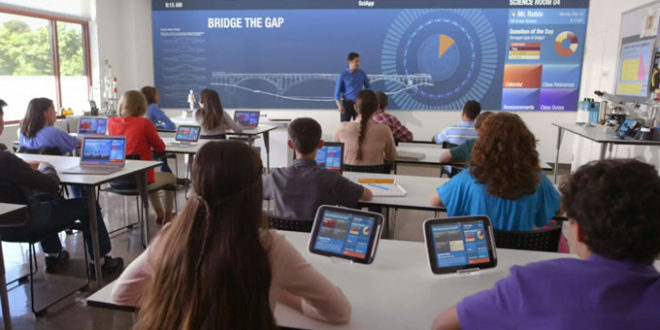
According to a BuiltIn report, nearly 90% of teachers agreed that technology helped them reinforce lessons and positively impact the performance of students. Other studies showed that a majority of middle-school students improved their test scores or grades after embracing technology and digital tools.
Despite this encouraging scenario, the use of technology in education comes with challenges. Educational technology can negatively affect the students’ focus by resulting in excessive screen time. Also, there are many doubts regarding the effectiveness of teachers in using the tools or technology concepts like AR, VR, and AI. Many schools could not afford the technologies because of the lack of resource support.
Teachers and students are facing a few challenges to thrive amidst the force of educational technology. Here is a summary of the challenges that they mostly face while adopting educational technology.
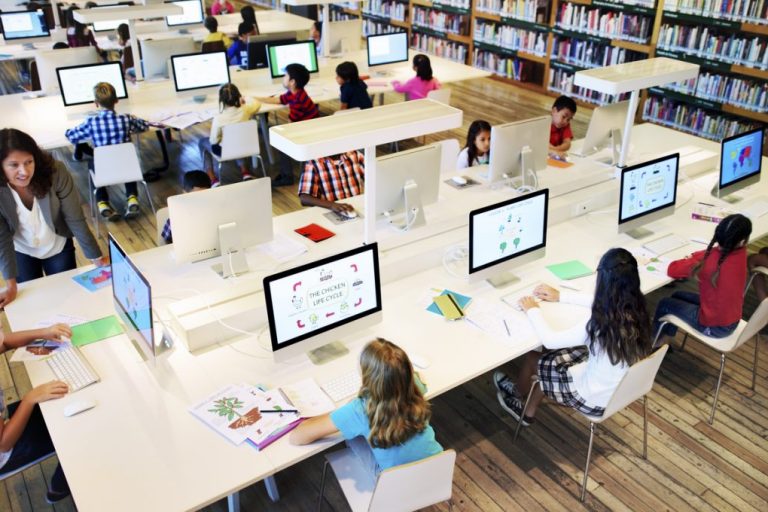
There are many EdTech challenges but this is the most crucial one. Many teachers, parents, and educational institutes do not accept technology wholeheartedly. They consider only real-time learning in classrooms or through one-to-one interactions with parents to be effective.
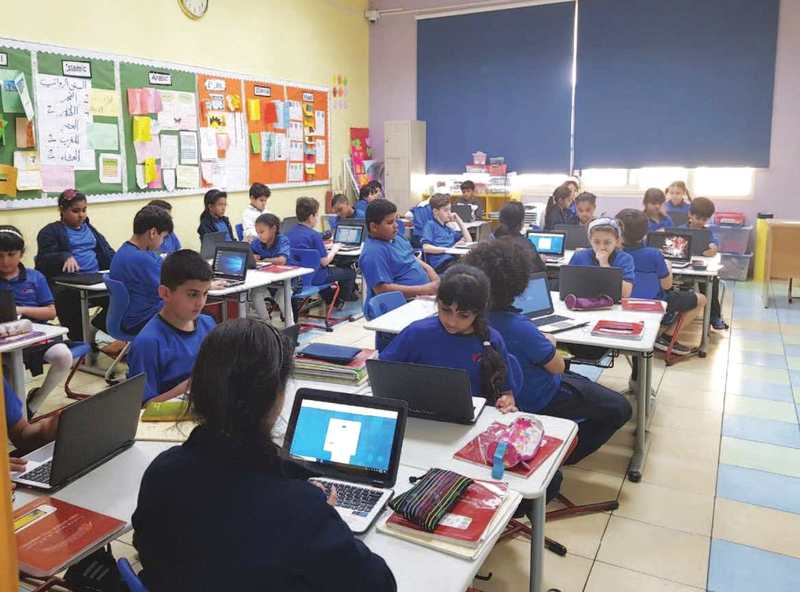
Technology needs consistent upgrades. Educational institutions, students, and teachers need to update regularly, whatever learning tools and applications they use. This puts an additional burden on them as they must continuously check software updates, upgrade their devices, buy new devices, etc. to keep pace with the current EdTech trends.
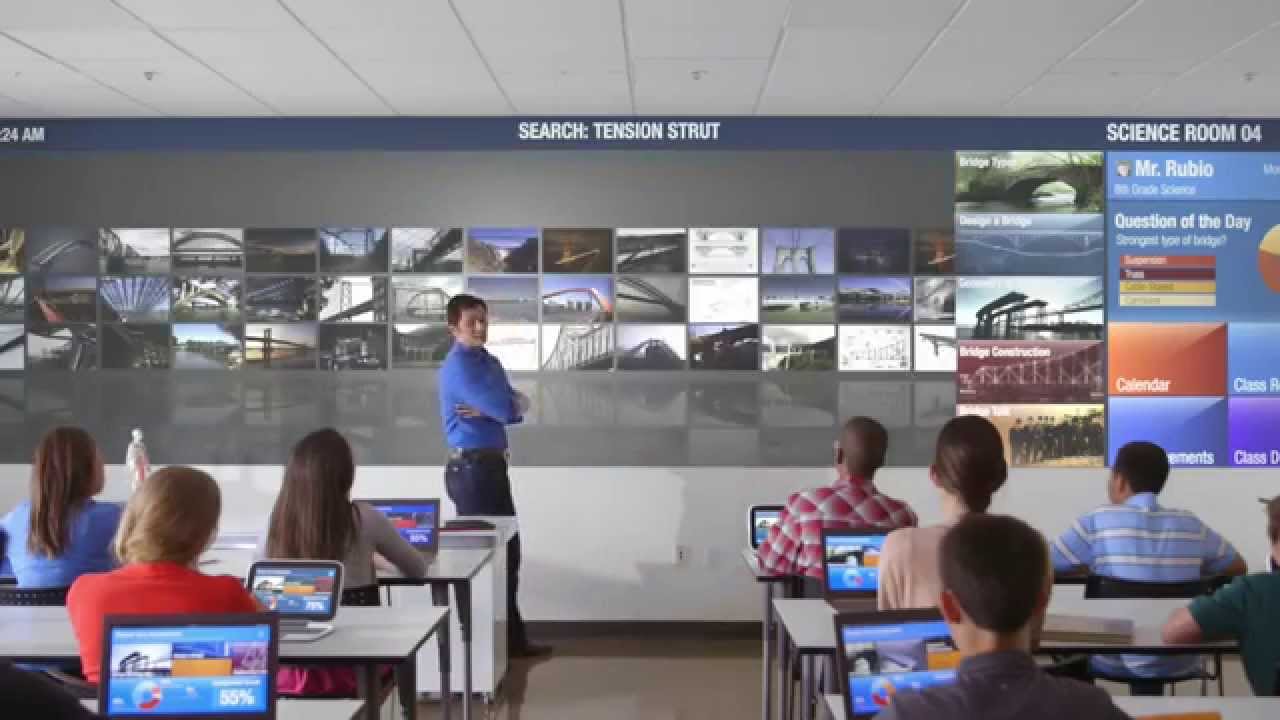
Any EdTech applications or devices need internet support for functions like video streaming, online chat, video calling, and so on. Internet connectivity with higher bandwidth and reliable devices are necessary for operating any EdTech apps or tools. Thus, schools, teachers, and students need to have these resources support.
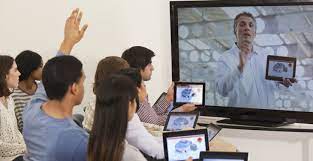
The education sector demands that teachers and students should have basic technical skills and know-how. They are the primary users of EdTech tools and devices. So, they must have the necessary skills or gain them to leverage the benefits of education technology.

Adoption of technology in any field is cost-crunching. The constant technological breakthroughs in the education sector compel educators and learners to invest in new devices and EdTech solutions. The eLearning or technology in education is making teaching and learning a costly experience in many ways.
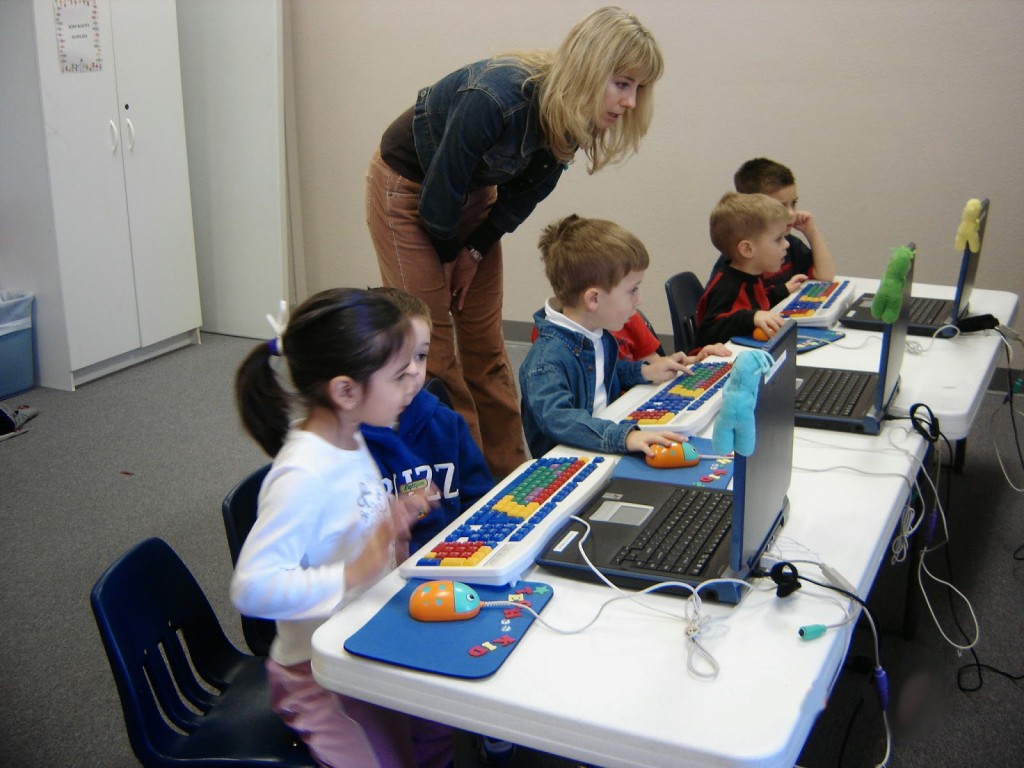
The advantages of using technology in education are multifaceted. It is a blessing for everyone in the sector, from education providers and schools to students.
The use of technology in education made learning easier and fun-filled for the students! Educational institutions and teachers are using devices, AI-based tools, and AR/VR technologies to engage them in an immersive learning experience. The students find more interest in learning lessons and doing homework. This surely improves their academic performance and grades.
In short, technology is consistently changing the education system for good. While it is not at all replacing the traditional classroom methods of learning, it is blending with them to prepare students for situations in the technology-paced world.
There are infinite benefits of technology in education! In this blog, we have attempted to discuss some of the most important ones.
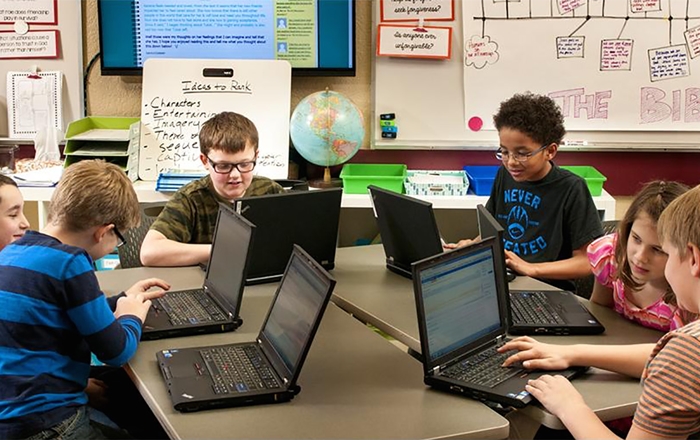
Take a look:
One of the most substantial advantages of technology in education is that it provides students with an ocean of information at their fingertips. They can access the information in the quickest possible time.
If you are a student, then gone are the days when you have to go to libraries and search through piles of books to do an assignment/project/homework. Thanks to benefit of the internet for a student! You can now access valid information anytime from a vast number of sources, i.e., websites, tutorial sites, YouTube videos, eBooks, PDFs, and so on.
This is the first ever effect of technology on education that students experience with the advent of the World Wide Web. You can get unlimited information and data in just a few clicks on your laptops, tablets, or mobiles. This enables you to prepare a lesson or write a paper without anyone’s help. Thus, technology enriches your knowledge base and makes you a self-sufficient learner.

Students can access a huge variety of learning materials on the internet. They include scientific articles, journals, research papers, educational videos, tutorials/guidebooks, informational websites, online databases, and blogs of educators/authors.
These are extremely useful if you are a high school student. You can write academic papers better providing all concrete information, facts, and statistics. You can support an argument, establish a hypothesis, or derive a proper conclusion for your paper by accessing the available information.
Technology helps you to enhance your academic grades without doing too much hard work. You do not have to spend hours in the school library, borrow books/resources from ex-students, or repeatedly bother the teachers. You can write well a paper by yourself while putting all the authentic information and assure a good score.
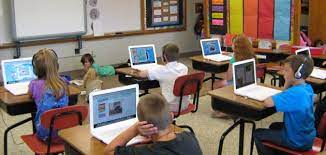
A great benefit of the internet for students is the opportunity for distance learning. Online classes became a reality with the power of the internet! Students can learn in the same effective way through a virtual screen or chat room.
You can share documents, important resource links, and media files during the online session with others students.
Schools and educators are complementing virtual learning sessions with traditional classes, which are enhancing the learning capabilities and skills of students. They take online classes outside the schools to provide additional tutoring to students, especially the weaker ones. Moreover, if you are interested in a subject or field that is outside your school curriculum like Data Analytics, you can take an online course to pursue your interest.
Also, many new educational institutes are coming up with only offering virtual courses for a spectrum of academic and professional subjects. Coursera, edX, and Udemy are some of the prominent providers of comprehensive virtual courses.

The benefits of EdTech also include an easy teaching experience. The teachers can tutor the students from distance or communicate easily outside the classroom. This enhances their ability to give instructions, improve the learning of students, and help them get better academic scores.
Moreover, technology integration in education resulted in mobile/desktop applications that are helpful as digital attention coaches for students! They helped teachers to organize the homework or tasks of students. They can simultaneously check the progress of tasks and remind or warn the students if they are late for a task.
Many schools or educators are using online tools today to keep an eye on their students and assist them in progressing academically. They can easily know whose grades are lower or who is slow in completing lessons. They can provide the necessary guidelines to them and help to gradually improve their academic performance.
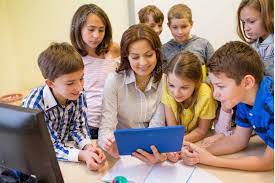
This is one of the noteworthy benefits of technology in higher education. Learners in higher grades develop better abilities to communicate with various technological tools and virtual courses.
Many students are reluctant to speak with the teachers in class or front of others. However, their inhibition or introversion goes away during online sessions or classes. They can interact freely through chat, audio, or video call, during their independent screen time.
Communication skills are crucial for students to do well in academics and the professional field in the future. If you have better communication abilities, you can clearly express your opinions and take part in constructive discussions.
You can share your understanding with educators and know what’s on their minds. Hence, you can garner more knowledge and use them effectively to improve your academic performance.

It is difficult to make young children sit in one place and learn. They easily get distracted. Similarly, elder students find it tough to keep up their focus and complete large papers or assignments. All in all, education is not a pleasant experience for all students. But, with technology, it is now an enjoyable experience for all.
The use of tablets, laptops, VR/AR devices, and touchscreen boards makes classes exciting for students. Teachers could easily keep up the attention of kids. Similarly, these advanced technologies help students of higher classes to understand complex concepts and science through immersive sessions.
Thus, one of the notable benefits of using technology in education is that it makes learning fun for students. Teachers could see the interest of students grow, which is reflected in their better academic marks.
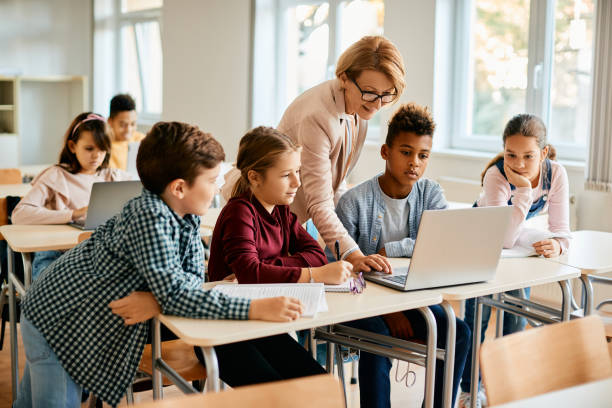
The use of technology in education also helps learners to gain new skills and enrich their knowledge base. Internet and online courses made that possible! Enthusiastic learners can search through a plethora of information sources online to know about a particular topic. It will help them use their additional knowledge to prepare academic lessons and surpass the scores of others.
EdTech is also helping aspiring young talents to garner professional skills that will help them in the future to grow. Most professional skills or subjects are not included in the academic syllabus such as Business Analytics, Machine Learning, Data Science, and Digital Marketing. You can do an online course for any particular skill outside your school hours. It will let you gain a thorough understanding of the subject and groom yourself for a preferred career/professional field.

One of the supreme benefits of digital learning for students is that it helps them stay updated on the latest technological evolutions. You can quickly adopt them and further enhance your learning experiences.
New tools like digital task planners, virtual classrooms, and eLearning apps are gaining prominence in the market. If you are aware of the trends of EdTech, you can use these tools to your advantage and make progress academically.
Students who update themselves with technological evolutions in education are more likely to be successful in their jobs. By utilizing their knowledge of the latest technologies and trends, they can help organizations to operate efficiently and achieve goals faster.

One of the significant benefits of digital technology in education is that it improves the physical and mental well-being of students. Various digital tools eased their tedious learning courses and made them interesting.
In many ways, EdTech methods improve your cognitive skills. Virtual learning sessions and the integration of AR are two prime contributors. They enhance the capabilities of your brain to read, interpret, learn, remember, think, and use logic. All these hugely impact your academic learning and performance in the long run.
As you can score good grades/marks due to the use of educational technology, it gives you confidence and a positive feeling. This boosts your mental health and helps you to concentrate better on your studies.

The advantages of EdTech are not only confined to the learning experience of students but also the teaching experience of educators. The different uses of technology, such as audio-visual presentations, virtual classrooms, wide-screen projectors, and digital planners help teachers to improve their delivery of instructions. This consequently enhanced the understanding and comprehension level of the students.
Besides, technologies increase the productivity of teachers! The digital tools they use not only increase the engagement of students but also provide them with more learning opportunities. Many teachers can also tailor-made their instruction method and use personalized tools for weaker students.
Altogether, educational technology helped teachers to increase their productivity, which benefitted both the students and schools.

One of the finest outcomes of technology integration in education is the homework planner software or task manager used by teachers. They are digital replacements for the school diary or paper planner. The teachers can feed in all assignments and projects for the day, week, or month. They can schedule them deadline-wise. They get real-time updates as the students start a task, pause it, and complete it.
A comprehensive digital planner also comes with a dashboard, which helps teachers to get an overview of the performance of the students. They can see hours studied, projects completed/in progress, grades obtained for completed lessons, and so on. They can also track the individual performance, achievements, and pitfalls of the students. It helps them to decide their syllabi accordingly in the next learning session.

While many experts argued that technology in education is a source of distraction, the situation is the opposite in reality. But, this is assured only if educators and schools know the right use of technology. If they provide students with mobile-based learning apps, it will easily distract them. They tend to move to social media sites, gaming apps, etc.
Thus, you should choose learning tools, such as desktop-based digital planners that limit distractions and help students to focus better. Those apps are featured to block external distractions and provide students with a secluded homework zone during their study time.
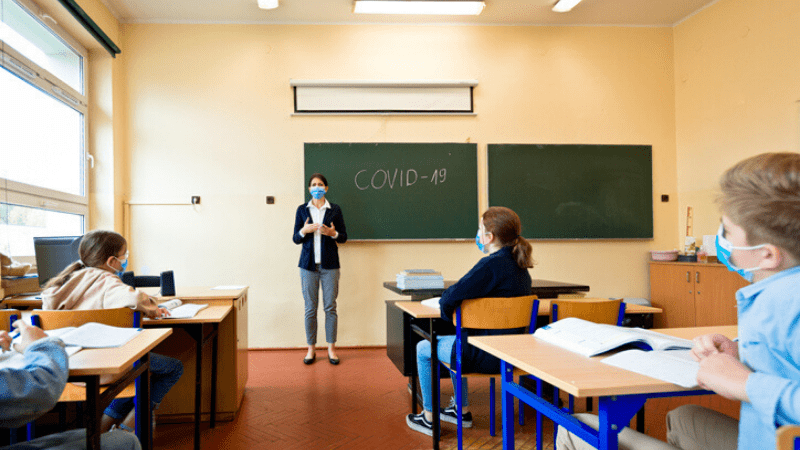
One of the assured benefits of using technology in education is improved collaboration between students and teachers. Online learning system not just enables the teachers to interact with students during lessons. It also allows the students to engage in one-to-one interactions with the teachers. By staying at the home, they can upload their projects or homework, which teachers can access and give necessary recommendations.
In the case of collaborative activities like group projects, compare the situation of a classroom with a virtual classroom setting. There are a few groups of students and the teacher assigns them tasks. Chaos or confusion is inevitable as some students will be loud, some will ask questions, some will be shy to ask, and some could not get the opportunity to be heard. Contrary to this, such a situation does not happen in an online setting. Every student is connected in the virtual classroom. The teacher responds and resolves queries of each of them individually, on independent screens.
It can be said that online learning also fostered interactions between students outside the school. They can share ideas and resources for difficult projects and support each other.

Educational technology provided students with 24×7 access to information and resources. Anyone who could not absorb concepts or learn in the classroom can opt for additional in-person online sessions.
Precisely, teachers can also create tailor-made learning plans for their students, according to their capabilities and interests. This is an added advantage of online learning which gives teachers peace of mind as they can pay attention to every student.
Also, the students get the scope to learn with ease and comfort. They do not have to see or follow what others are doing in the class. Instead, they can follow the distinct schedule set by their teacher and do the assigned tasks.
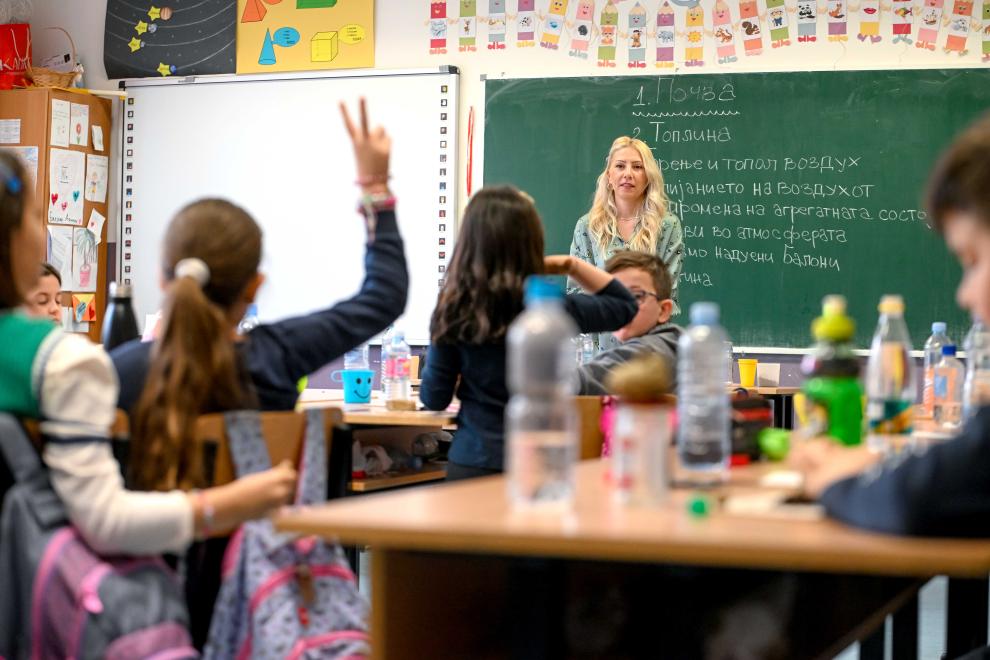
Online educational tools are helping students to enhance their self-learning which is reflected in their growing academic productivity! Apart from personalized learning experiences, EdTech also enabled them to gain skills in task management and develop cognitive thinking. This is especially necessary for students when they reach higher grades. It aids them to manage piles of assignments and complete them one by one on time, without losing focus.
Many time-bound online courses helped students to develop a sense of dedication. They learned to avoid any kind of diversions or disruptions in their schedule to complete the courses just in time. Students also have easy and instant access to information and learning resources.

No wonder technology drives innovation and creativity! Creators of different EdTech tools and applications incorporated fun elements to engage the young learners better. This is also called gamification where apps provide intuitive responses such as reward points, scores, clap sounds, congratulatory visuals, appreciation remarks, etc. on completion of a learning step. This is highly motivating for the students and pushes them to go to the next step.
Many eLearning apps come with interactive gaming elements such as the collection of coins, gems, or other rewards. They feature personalized scoreboards, which allow students to compete and outperform others. In other words, gamification helped students learn in a fun and interesting way while building their focus and encouraging them to do better.

The concepts of VR and AR provided students with immersive learning experiences, which only helped in strengthening their knowledge base. Teachers or educational institutes used these technologies to teach tough science concepts, baffling theories, and historical places to the students. This made things easier to absorb and remember for the students, which was hard with textbooks.
Also, educational technology helped students enjoy learning a lot! Students are no longer confined to images and descriptions provided in textbooks. They can search on the web, browse through websites, and see videos. This helped them gain in-depth insights into a subject or concept and get better marks by preparing comprehensive papers.
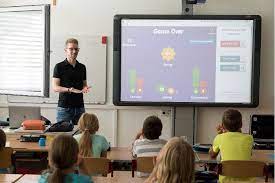
Digital applications are also eliminating the need for teachers to maintain a diary or to-do list of tasks. Virtual lesson planners, grading software apps, and online assessments have helped them save a lot of time. They can input everything in the application and schedule their submissions according to the deadlines. So, students will never miss out on any assignment if they use such an app!
This brings great relief for the parents too. Many apps keep track of their homework or assignments and remind students about their deadlines. Thus, students become self-aware and complete their tasks on time. So, the parents do not need to hover around their children’s shoulders to check whether they are doing their work.
The other eLearning options such as online open courses, eBooks, YouTube tutorials, etc. have added to the learning experience of students, especially those in higher classes. They do not need to bother the teacher often to seek guidance in assignments. This not only helped teachers relax a bit but also improved their relationship with students.
One of the most crucial EdTech benefits is that it helps protect the environment and ensures sustainable learning. Digital learning tools and virtual sessions are saving a huge amount of paper and hence, trees.
Teachers are encouraging students to take their tests online or prepare their assignments on computers, which could be shared through email or cloud storage. Many schools and educators are replacing paper books with eReaders in the wake of rapid environmental damage.
The use of technology in education made students of this generation understand the significance of environmental sustainability. Electronic and digital mediums of learning are not only saving the environment but also providing convenience to teachers and students. It is helping them save up costs on different learning resources like books, notebooks, boards, paper planners, educational outings, etc.
The benefits of using technology in learning today will prepare you for the future, which is going to be fully digitized. The world is advancing towards an era where everything is influenced or powered by technology.
Different tools of EdTech like virtual classrooms, AI-assisted planners, video learning, engaged learning for TV apps, online assessments, etc. made students acquainted with modern-day technologies. It also helped them to set priorities regarding the use of technology. They can differentiate the technologies used for recreation such as gaming apps, TV apps, OTT, social media, etc. from the technologies helpful in learning. This will help them draw a line and use technology wisely.
Different companies today hire talents after assessing their education level, cognitive skills, as well as, technical competency. When students are familiar with different technologies from an early age, they can easily land a job in the desired company. Their parents do not have to engage them anywhere for vocational training and to make them competent at using computers, software programs, and online communication tools.
Lastly, the intervention of technology in education enabled the children to learn at their own pace. There are many students with lesser learning capabilities or memorization skills than others. The competitive classroom environment and usual teaching methods are not suitable for them as they could not catch up with the lessons. They need special attention to perform better academically.
One of the biggest benefits of using technology in education is that it helped such students get an education in a personalized way. There are digital apps that allow teachers to set individualized learning programs and schedules for them. They could set tasks and timelines for submission, according to their capabilities and skills. While this benefitted many kids and helped them improve their academic scores. it also assisted teachers to teach students with ADHD (Attention-deficit/hyperactivity disorder) or such issues, independently.
By educational technology, it means the unity of technologies such as computers, web and multimedia, digital boards, overhead projectors, and video integration. All these are truly influencing the education sector, assisting in the teaching and learning processes. But, how do they work for the students, teachers, parents, and classrooms separately? Let’s find out.
The judicious use of technology in education helped students to increase their engagement in learning and increase their academic success rate. Some of the key ways educational technology is influencing students’ life are:
Connects them with teachers and increases communication.
Enhances group interactions or interaction with other students.
Provides students with access to a vast pool of information.
Helps the students to connect to the outside world.
Prepares students for the workforce.
Engages collaboration with teachers and educational institutes.
Teaches punctuality and responsibility.
Adds a fun factor and sparks interest in learning.
Teachers can use different tools of educational technology to their advantage and provide a constructive learning experience to the students. They enabled the teachers to engage with new methods of teaching that is attention-grabbing for the students. Teachers derive the following benefits from educational technology.
Teach in an enriched learning environment where they can attend to students separately.
Engage the students physically and virtually through AR/VR technologies and multimedia content respectively.
Help students develop practical learning skills by infusing immersive and cognitive exercises in the class.
Provide instant resources to students, which helped them enhance the performance of academic papers.
Grab the interests of students and ensure higher retention.
Meet the unique requirements of students with special abilities with the help of personalized learning tools.
The use of technology in education boosts parents’ confidence and helped them support their children better. Here are the key ways parents are benefitted.
Parents could set expectations for their students and track their children’s activities.
They could use technology to help their kids face struggles in education and overcome them. The finest example is the use of a digital homework planner, which works as an attention coach for students with attention deficiency.
Parents could get help from available online resources and educational tools to help their children in completing a task.
They can access educational videos and recorded class lectures to understand the learning experience of their kids and support them.
Parents do not need to continuously keep an eye on their kids to help them focus on their studies and can relax or enjoy their own time.
The use of technology in education benefitted students, teachers, and parents while transforming the classroom setting. The incorporation of different technologies has helped classrooms to provide learning experiences. Here’s how.
The technology resulted in immersive and engaging learning with the use of videos, educational TV apps, web resources, and projectors.
Improved collaboration between teachers and students which helps in group activities.
Enabled the schools to engage in practical exercises that improved the cognitive skills and problem-solving techniques of students.
Helped schools understand the educational requirements of different students and incorporate strategies and curriculums accordingly.
Enabled educational institutions to engage in seamless planning, execution, and evaluation of different learning methods.
The countless benefits of educational technology are seen in every area of the education sector. Thanks to the multiple types of educational technology, teachers and students can now experience a new phase of learning.
Various types of technologies that 21st-century schools and educators are using are:
It implies the various innovative tools used by teachers to facilitate learning in the classroom and offline. Some of the prominent examples are Digital Whiteboards, Google Classroom, Digital Homework Planner, Moodle, and TalentLMS.
Augment and Virtual Reality is still developing, and they have a long way to go to fully influence the education experience. As of now, they help students to visualize real-life concepts and places in the classroom setting and understand them deeply.
Mobiles or smartphones with installed apps are helping students to fulfill different educational purposes. They can access information on Google, YouTube, and Social media. They can access various eLearning platforms, chat with teachers and other students, attend online webinars, etc.
It is an advanced form of educational technology, providing opportunities for students to create 3D models of various objects, from art sculptures to science stuff. It fostered the creativity of students in developing school projects.
The technological evolution in the education sector modernized the classrooms. It led to the innovation of smart classrooms where computers, projectors, tablets, and software are all connected and well-coordinated. This aided in teaching and grabbed the interest of students in academic subjects.
This technology involves presenting students with digital rewards or badges for goal fulfillment in academics. It involves point scoring, team ranking, and fun games. Gamification has grown the interest of students in studies and motivated them to do better.
The use of technology in education along with digitalization brought massive change to the whole learning system worldwide. But this leaves us with a big question. Is technology the future of our education?
If you are not sure, here are a few reasons to justify why technology in education is going to stay in the future!
The advantage of eLearning systems or EdTech tools is that they helped students to learn basic technical skills which prepare them for their professional journey in the future.
Studying is boring to most students. Besides young children with less attention span find it difficult to keep their focus on their studies. A different form of engaging learning tools and immersive experiences made studying interesting for them and helped them do better.
Education and learning spree increased in students because they got a treasure of unlimited information on the interest. They can solve their heightened curiosity on any matter or subject by getting valid information from sources.
The use of technology in education results in better collaboration among students and teachers. It allows students from different locations to collaborate on the same project. Similarly, it allows the teachers to interact with them and support the students.
Teachers have additional tools at their end, which helped them to educate and instruct the students better. They can teach theories through audio-visual examples that students can easily absorb. Teachers can also access valuable information and learn new things to increase their knowledge base and teach more constructively.
The use of technology in education is changing the way you learn. As technology is fast advancing in every field, new tools, devices, and e-learning systems are coming up to ease the learning experience of students. Most teachers and parents have witnessed the positive side of this, i.e., improvement in the academic grades or performance of the students!
With so many benefits of using technology in education, it’s interesting to see how your learning experience will evolve and improve with time. If you are a student and want to enjoy one of the greatest perks of educational technology, then try the Clarifi app. It is an amazing digital homework planner that works as a desktop application. Helping the students to organize, manage tasks, block distractions, and complete tasks independently on time, this software proves essential for them. It also lets them track deadlines for the tasks and stay up to date with their class or calendar, which ensures that no work is missed out. The software helps in significant improvements in their academic outcomes and relieves the stress of parents and teachers.

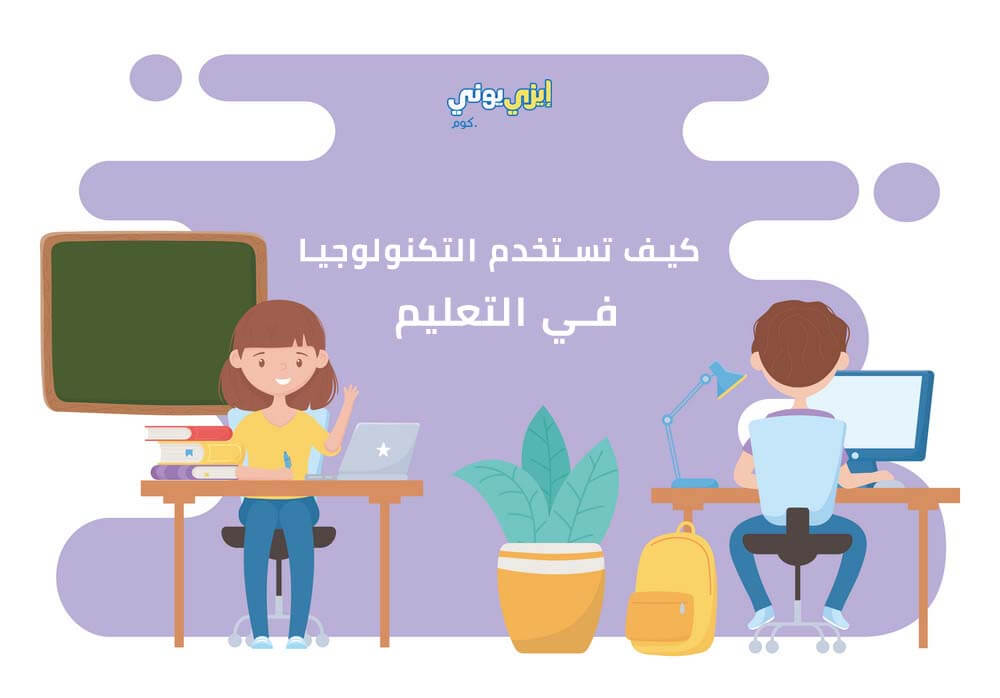
استخدام التكنولوجيا في التعليم له أثر واضح في تطوير المنظومة التعليمية، وذلك لأنها أحد الوسائل التعليمية الحديثة والمتبعة لتعزيز رفع مستوى الوعي عند الطلاب وتعزيز مهاراتهم وإنجازاتهم، حيث استطاعت التكنولوجيا أن تعمل على خلق بيئة تعليمية متطورة وأكثر تفاعلًا عن استخدام التقنيات القديمة
.
تكنولوجيا التعليم هي عبارة عن نظام يعتمد في مضمونه على مجموعة من العلوم التي تهتم بالتعلم الإنساني اعتمادًا على بعض مصادر التعلم، والتي تساعد في تحسين نشاط الطلاب وتعزيز قدراتهم الذهنية.
وسوف نوضح لكم في هذا المقال كافة المعلومات التي تدور حول كيف تستخدم التكنولوجيا في التعليم
.
كيف تستخدم التكنولوجيا في التعليم ؟ سؤال يطرحه الكثيرون، ويحتاجون للإجابة عليه، وهذا ما سوف نجيب عنه في مقالنا هذا.
لقد أصبح للتكنولوجيا دور هام ورئيسي بل وفعال في تطوير المنظومة التعليمية، حيث تم استخدام العديد من الوسائل التعليمية المتطورة، وذلك من خلال استخدام الأجهزة التعليمية الحديثة والتي تتمثل في الشاشات والسبورة الإلكترونية والحواسيب الإلكترونية، وذلك تطبيقا للاستراتيجية التعليمية المتطورة
.
أولًا: لابد من وجود دعم مالي من قبل الدولة وذلك من أجل الإنفاق على تطوير المنظومة التعليمية وشراء الأجهزة التي تساعد في تطبيق برامج التكنولوجيا والتي تحتاج إلى ملايين الدولارات
.
ثانيًا: يجب أن يتم تدريب هيئة المعلمين إلى جانب الطلاب على طرق تطبيق التكنولوجيا في التعليم، وممارسة استخدامها في تطوير المناهج التعليمية، ولذلك فلابد من وجود كوادر تعليمية مدربة لشرح وتبسيط المناهج الحديثة مما يعزز أداء الطلاب والمعلمين
.
ثالثًا: تطبيق الوسائل التكنولوجية بالطرق الصحيحة بالأسلوب الذي يتناسب مع المواد العلمية، والتي تختلف مع اختلاف المواد الدراسية، فمثلا: بعض المواد يجب أن يتم دراستها في المعامل الحديثة المخصصة لها، مثل: مادة الفيزياء والكيمياء والأحياء، وبعض المواد الأخرى النظرية التي تحتاج إلى وسائل للعرض كالمواد النظرية المتمثلة في اللغات العربية والإنجليزية والتاريخ والجغرافيا.
العمل على التعامل بنظام التقييم للطلاب، وذلك عن طريق التعامل بملفات إلكترونية هدفها تقييم الطالب وتعزيز الصلة بينه وبين المعلم، كما أن هذه الملفات غير مكلفة بل إنها أقل تكلفة من الملفات سابقة الاستخدام.
السعي وراء المصادر التعليمية المتطورة مفتوحة المصدر لما لها من أهمية في المنظومة التعليمية، كما أنها ذات تكلفة أقل وتساعد في اعتماد الطالب على الموارد التعليمية الرقمية.
تعزيز العمل الجماعي وذلك من خلال استخدام التسجيلات الصوتية والمرئية ومشاهدة الطلاب لها في الصفوف الدراسية
.
الهدف من تطبيق التكنولوجيا التعليمية الحديثة هو تطوير المنظومة التعليمية والتربوية وإلى جانب ذلك فإن للتكنولوجيا أهمية كبيرة في تعزيز طرق ووسائل التعليم والتي تتمثل في الآتي
:
ساعدت التكنولوجيا في تطوير مهارات التواصل بين الطرفين والعمل الجماعي كما ساعدت على تعزيز مهارات الطلاب وتعليم النطق السليم.
الإبداع في التفكير ومحاولة خلق طرق ووسائل صحيحة للتفكير في حل المشكلات، وإمكانية الحصول على نتائج إيجابية بحتة.
تعزيز السلوك الإيجابي في المشاركة بين الطلاب والعمل على تعزيز المفاهيم الصحيحة وتطوير النمو اللغوي.
لها دور هام ورئيسي في توفير مصدر غزير من المعلومات التي يجب أن يكون الطالب والمعلم على وعي بها.
سهلت تطبيق المناهج الدراسية الحديثة، وفتحت آفاقاً جديدة بين الطالب والمعلم حتى يكونا على اتصال مباشر وذلك من خلال استخدام شبكات الإنترنت الخاصة
.
كيف تستخدم التكنولوجيا في التعليم وكيف يتم تطبيقها هذا سوف نوضحه الآن
:
هي أحد الوسائل التعليمية الحديثة والمتطورة
.
وذلك من خلال إنشاء المدونات التي توضع بها المفاهيم الصحيحة والمناهج الدراسية الحديثة التي يتم تدريسها
.
وذلك من خلال التعامل عن طريق المواقع الإلكترونية المتخصصة، مثل الفيس بوك حيث يقوم المعلم بنشر المقالات التعليمية وإمكانية التواصل مع أولياء الأمور، وذلك حتى يكون ولي الأمر على خلفية بما يدرسه الأبناء.
.




